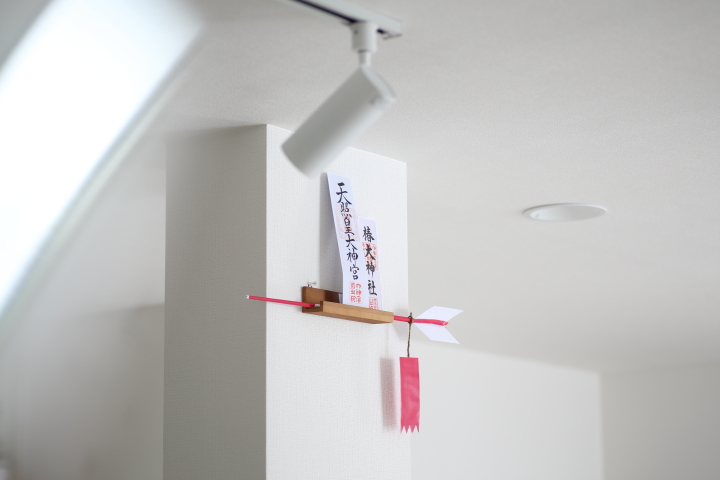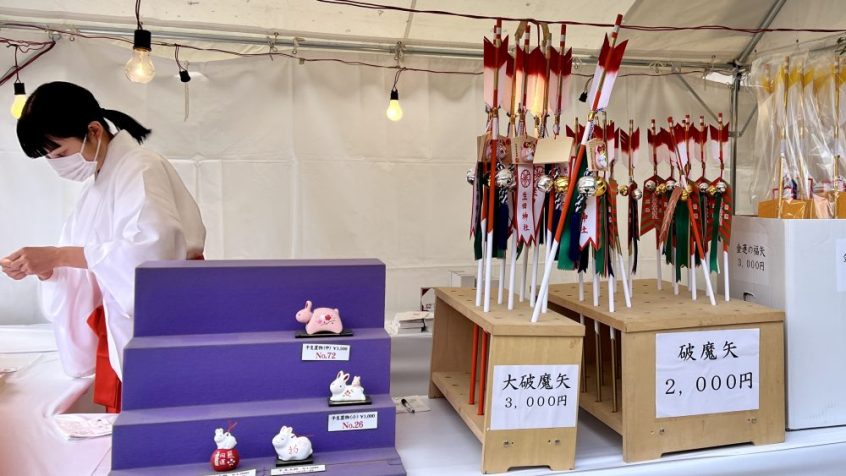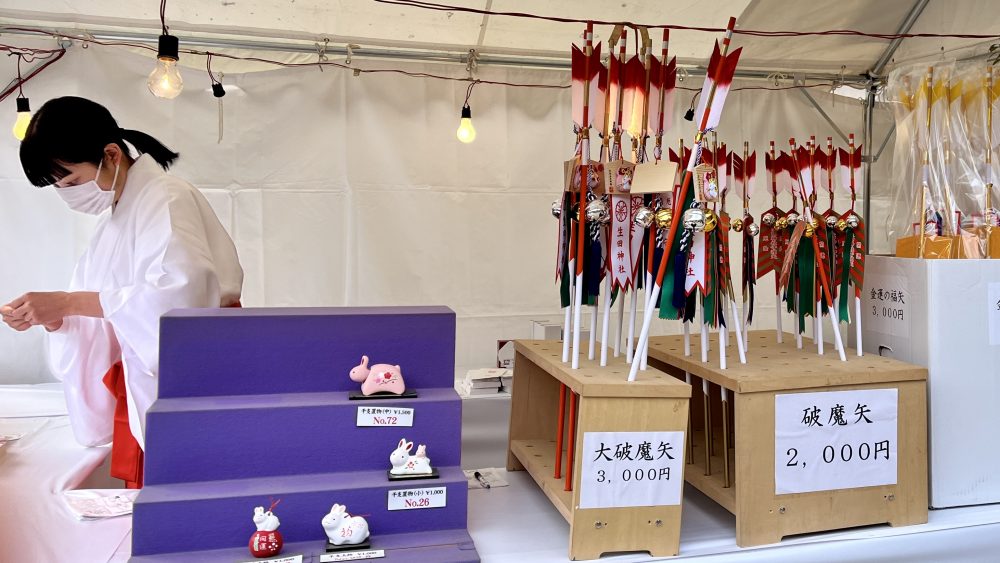Have you ever heard of HAMAYA? Many Japanese people buy this arrow-shaped lucky charm when they go to Hatsumōde 初詣 (New Year’s shrine or temple visit). The “Hamaya” is a popular item for Hatsumōde (New Year’s visit to shrines temples). Learn the legend behind it and have a happy New Year.
What is Hamaya(破魔矢)?
The Kanji for Hamaya is 破魔矢 (destroy-demon-arrow). Hamaya are arrows used to ward off evil spirits, and the bow used to shoot them is called a Hamayumi 破魔弓. They are sold at shrines and temples as a lucky charm for the New Year, but they are also used to mark the ridgepole-raising ceremony of a newly built house.
Originally, bows and arrows were weapons, but they were also believed to have the power to exorcise evil spirits. The oldest of these rituals called Hamauchi 破魔打,” had been held on New Year’s Day divination.
In this ritual, a target about 1 meter in diameter made of straw rope is thrown in front of children holding bows and arrows, and the children are asked to shoot through the center of the target. It is said that the bow and arrow were brought back as a charm for children’s growth, and that this was the beginning of Hamaya or broken arrow as a good-luck charm.
The reason why the tip of the daggers are not sharp is that they are not used to shoot people or objects, but rather to purge evil spirits.
How to decorate and place the Hamaya?
【Location】
The awarded arrows are displayed on the altar, in the tokonoma (alcove), at the entrance, or in the living room.
【Direction】
In the building ceremony of a house, the arrow is pointed in the direction of the devil’s gate, but in the case of a house, there is no specific direction. However, it is advisable to keep the arrow’s point away from the sky to avoid pointing it at the heavenly deities, and to keep the arrow as high above your head as possible.

Photo: preco cirico (https://precocirico.com/zakka/interiazakka_kazari/hamaya_kazarikata.html)
If you are concerned about this, please refer to the theory that the tip of the breaking arrow should be pointed in the direction of the year’s bad luck (opposite the direction of the year’s zodiac sign).
In 2023, the direction of the rooster is west (270 degrees).
Here are the opposite directions (unlucky direction) for each zodiac year. This means that each year, the arrow of the Hamaya must point in that direction.
Year of the Rat (2020, etc.) …… Direction of Noon = South (180 degrees)
Year of the Ox (2021, etc.) …… Direction of Sheep = South Southwest (210 degrees)
Year of the Tiger (2022, etc.) ……Direction of Monkey = Slight Southwest (240 degrees)
Year of the Rabbit (2023, etc.) ……Direction of the Rooster = West (270 degrees)
Year of the Dragon (2024, etc.) ……Direction of the Dog = West Northwest Minor North (300 degrees)
Year of the Snake (2025, etc.) ……Direction of the Boar = North Northwest slightly West (330 degrees)
Year of the Horse (2026, etc.) …… Direction of the Rat = North (0 degrees)
Year of the Ox (2027, etc.) …… Direction of Ox = north-northeast slight east (30 degrees)
Year of the Monkey (2028, etc.) …… Direction of Tiger = East-northeast slightly north (60 degrees)
Year of the Rooster (2029, etc.) …… Direction or Rabbit = East (90 degrees)
Year of the Dog (2030, etc.) ……Direction of the Dragon = East Southeast Minor South (120 degrees)
Year of the Boar (2031, etc.) ……Direction of Snake = South Southeast slightly East (150 degrees)
How to dispose of a Hamaya
The Haimaya is a good-luck charm for the purchased year only, and it should be returned to the shrine or temple that gave it to you the following year. Please look for Nōsatsusho 納札所, and return your old Hamaya and other lucky charms like amulets. Old amulets and other lucky charm items brought here will be burned at a later date. In Japanese, we call it Otakiage お焚き上げ. Oyakiage is a religious ceremony in which offerings are made at shrines or temples and then burnt and returned to heaven.
Many shrines hold the Otakiage ceremony called Dondoyaki on January 15, so you have until that day to return the amulet, but rest assured that the temple will accept it all year round.
If you are not able to return the amulets to the shrine or temple where you have obtained, you may return it to another shrine or temple, but make sure to return shrine items to the shrine and temple items to the temple.
If you are unable to visit Japan again to return the amulet
January is a month of lively festivals such as Hatsumōde and Tōkaebisu festival in Japan, and it seems that many travelers want to purchase Hamaya and Omamori (good luck charms). The problem, however, is how to dispose of them. It is best to return them when you return to Japan the following year, but if this is difficult, you can dispose of the amulets yourself.

If you wish to dispose of the amulet yourself, wrap the amulet in a white Japanese writing paper and sprinkle a pinch of coarse salt on it before burning it. The white Japanese writing paper and salt are meant to “purify” the amulet. Alternatively, you may wrap the amulet in white paper and sprinkle a pinch of coarse salt on it before disposing of it in the garbage.
The important thing is to feel gratitude for the amulet.



